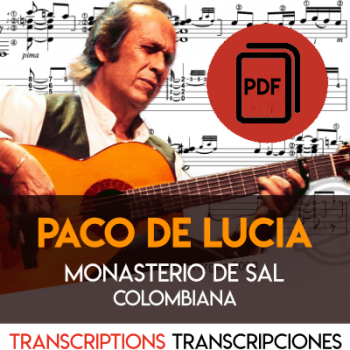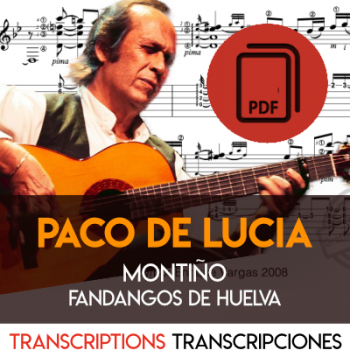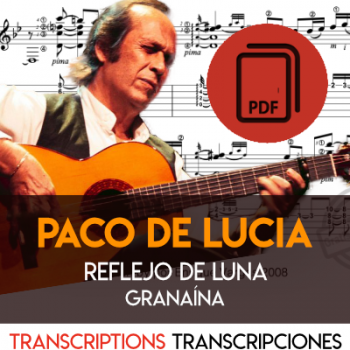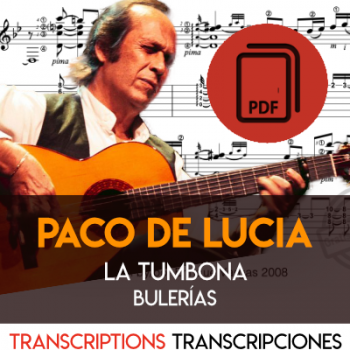A few days ago I came across a statement that made me cringe, due to its obvious unfairness and falsehood: “...a falsteta por bulerías can’t be transcribed in music”.
Without any desire to enter into this sterile and useless debate, I will, nevertheless, make make a few points.
Every sound can be expressed in writing, be it classical, jazz, flamenco or singing of a nightingale. Of course, written music can’t transmit swing, phrasing, dynamics and emotions. These aspects of musical genre are an exclusive dominion of the interpreter -there is a reason all musicians are different. But, when it comes to transmitting a musical text, solfeggio is a powerful tool, which can and should be used in all styles of music.
And the argument “...but, the Maestro Paco de Lucía didn’t know how to read or write music” is invalid and irrelevant. The genius of this man was immense, incalculable, you couldn’t measure him by normal, earthly standards. We, mortals, are not Paco de Lucía. Let him rest on his eternal pedestal.
But Bach did know music. So did/do Miles Davis, Coltrane, Parker, Metheni, Corea, Pass - all jazz musicians knew/know music. Rafael Riqueni, Carles Benavent, Jorge Pardo, Chano Domínguez, and many others, do know music. No, solfeggio per se won’t make you a musician. But, if you are a musician, solfeggio will make you a better one. To deny is to spit in the faces of countless musicians who spent hours, days, months, years, learning their craft. It would be to spit in the faces of thousands of young black aspiring musicians, who, dreaming of the fame of Duke Ellington, Count Basie or Charlie Parker, would spend countless sleepless nights, oftentimes, on empty stomach, learning theory and solfeggio.
And whether flamenco can be transcribed in music or not, I will let you be the judge.
Starting today, we will publish a series of videos of Enrique Vargas’ students, interpreting pieces and separate falsetas of flamenco masters, learned entirely from written transcriptions by their teacher, and published by VG Ediciones.
We open this cycle with the famous bulerías by the Maestro Paco de Lucía “Almoraima” from the CD by the same name, interpreted by Miguel Arévalo. You can compare this to the original recording (obviously, I’m referring to the text per se; Maestro Paco de Lucía’s interpretation is unique and inimitable).




